What are Outbound Links?
Outbound links, also known as external or outgoing links, are hyperlinks on your website that direct users to another website or domain.
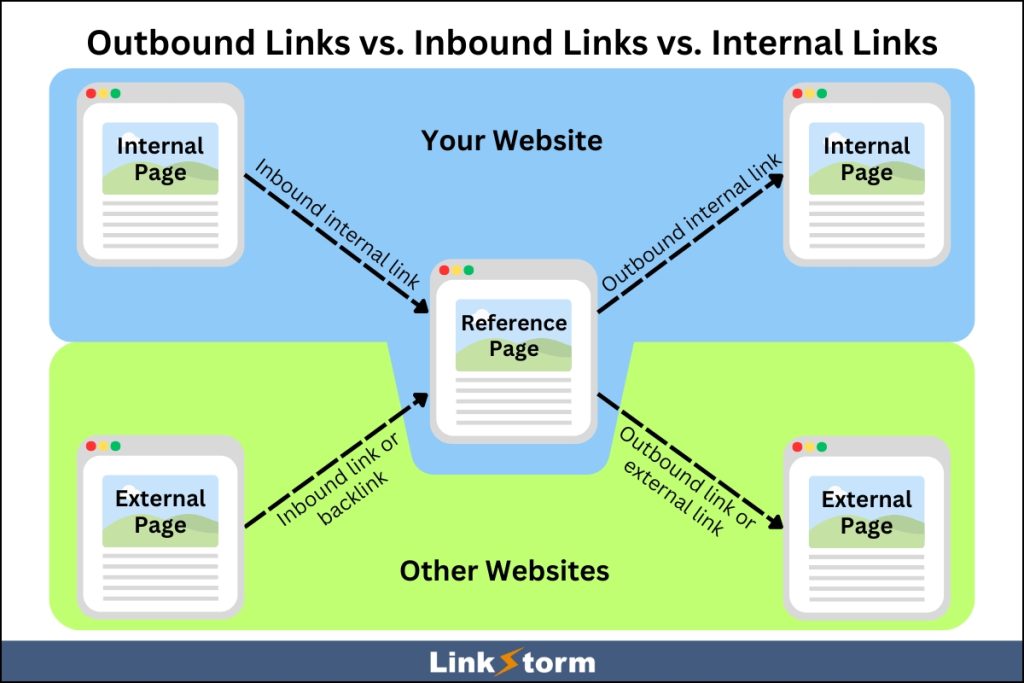
External links help create an interconnected web ecosystem by connecting your internal pages to external pages.
Moreover, they also improve the user experience by providing site visitors with valuable external resources that support your content.
Many search engines view external linking as a sign of trustworthiness since you’re consciously taking users out of your website if they click those outbound links.
However, excessive or poorly chosen outbound links can still harm your website’s SEO. Monitoring your outbound links can help you distinguish which links are relevant and which are not, helping you maintain your site’s authority while maximizing user satisfaction.
This resource looks at five distinct ways to check outbound links and why this activity is essential.
Key Takeaways
- Outbound links signal a website’s trustworthiness in Google’s eyes as they send users to relevant external websites.
- While beneficial, excessive use of outbound links can dilute SEO value, limiting the equity received by linked pages.
- Site owners can monitor outbound links using various tools and methods, including LinkStorm, Screaming Frog, Ahrefs, Semrush, free external link checkers, and manual checks.
- LinkStorm offers comprehensive SEO support by tracking both outbound and internal links, identifying sitewide issues, and suggesting contextual internal linking opportunities.
Why Should You Monitor Your External Links?
As much as having outbound links on your content is important, tracking where those links lead is equally crucial.
Here are four reasons to monitor your outgoing links:
To support a positive search experience for users
Let’s face it. When the average user reads your content, they don’t think about SEO. All they want is to have their burning questions answered. Sometimes, even 2000-word, comprehensive, high-quality content does not cover the desired necessary information. This is where outbound links come in.
Outbound links can support a user’s search query by directing them to alternative resources that complement your content. These external pages either help answer the question, provide additional context, or expand on a topic you’ve briefly covered.
Whatever it is, the right outbound link may satisfy the search intent. But you must monitor them frequently as links leading to outdated or unreliable content can impact your site’s credibility. Tracking external links can help you determine whether to maintain, remove, or replace the URL.
To prevent broken or redirected links
Over time, externally linked pages can undergo link decay, which means those URLs no longer lead to the original destination. This can happen for one of two reasons:
A previously valid link might lead to a 404 error or redirect to irrelevant or low-quality content. Either of these two can frustrate users and diminish trust in your website. Moreover, they can indirectly harm your SEO by signaling to Google that you have poor site maintenance.
Regularly monitoring outbound links ensures that users always land on valuable, functional pages that support their searcher journey.
To control link equity distribution
All types of hyperlinks, including outbound links and internal links, pass a portion of the source page’s authority to the linked pages. This is called link juice or link equity. In principle, the more link juice received by a page, the more favorable ranking it receives on SERPs.
While linking to credible and authoritative external pages can enhance your site’s perceived trustworthiness in Google, excessive or unnecessary external links can dilute the distributed SEO value.
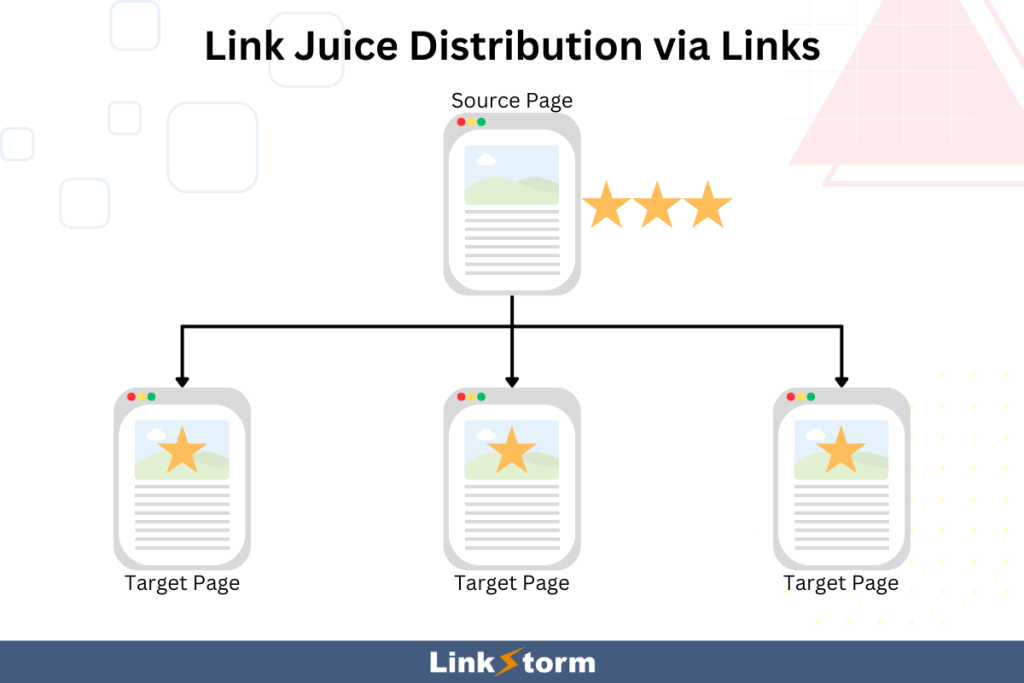
A crucial strategy in any external linking campaign is knowing how many links to include per page. This can help you balance providing value to users and maximizing the amount of authority shared to each link.
Another trick is to use the correct rel attribute for links. Qualifying external pages as nofollow means you do not want to “endorse” the linked page and pass any SEO value.
Google will not count nofollow links as bona fide votes of confidence, so they are best reserved for sponsored content, untrusted websites, or user-generated content you cannot fully vouch for.
To avoid penalization by Google
Google expects websites to maintain a high-quality standard, even in their linking activities. Externally linking to spammy, malicious, or irrelevant websites not only pesters users, which can harm your SEO, but it also violates Google’s guidelines.
More often than not, outbound links are beyond our control. Meaning that if the webmaster decides to self-sabotage its website, we can do nothing to prevent it.
All we can do is monitor outbound links and ensure they add value to users and not lead them to harmful content, such as malware, phishing sites, or blacklisted domains.
This way, you protect your website’s SEO health while maintaining a strong reputation among users and search engines.
Regularly checking your outbound links might be an inferior SEO activity compared to content creation or link building. Still, it’s a crucial maintenance activity that supports the overall health of your website. Conversely, when you neglect external links, it will eventually show once Google notices and your SERP ranking declines.
So, how can you check the outbound links on your website? Here are five ways:
1. Use LinkStorm to Track Outbound Links
While LinkStorm is primarily an internal linking tool, it can also check the links from your website pointing to external pages. Here’s how to do it:
Log into your LinkStorm account and click Links from the main dashboard’s sidebar menu:

The Links tab lists all of the hyperlinks found on your website. When you click the External button at the upper panel, you will find all of your website’s outbound links.

LinkStorm not only shows the source and destination of the outbound links but also includes essential data to make your external link audit easier. This includes:
- GSC metrics like impressions, average position, CTR, and clicks
- The type of link (whether text link or image link)
- The anchor text used for the hyperlink
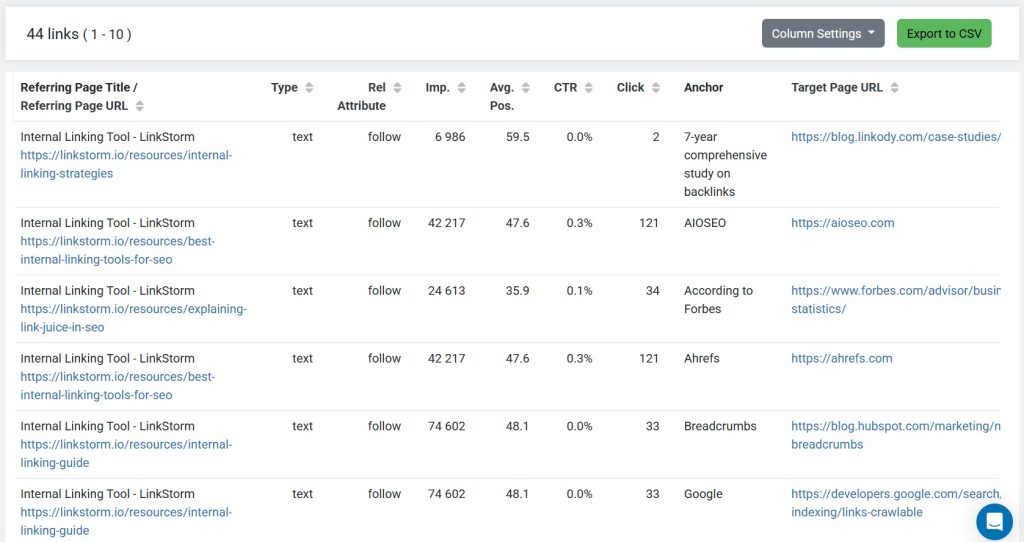
You can also filter each column according to your preference or tweak the column settings to add or remove columns as needed.
Another way to explore outbound links is by clicking the Anchor tab from the sidebar menu. This will show all of the anchor text used throughout your website.
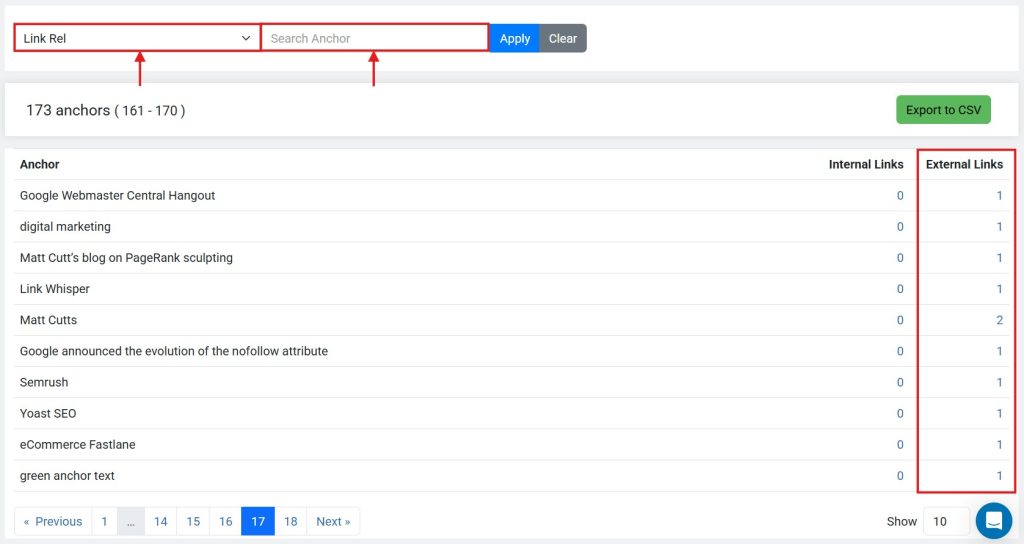
You can filter the results by clicking the Link Rel drop-down to select the desired rel attribute of listed anchors: Follow, No Follow, UGC, or Sponsored.
In the External Links column, click on any number to view all external links associated with the anchor text in that row.
For instance, one external link uses the anchor text “Google Webmaster Central Hangout.” When you click 1, you should find the referring page containing that anchor and the destination link, as shown below:

With LinkStorm, you can easily find all sitewide outbound links in a few clicks, and it includes essential analytics, making the process more seamless and intuitive.
2. Use Site Audit Tools like Screaming Frog
Screaming Frog is one of the most popular free SEO audit tools. However, the average user might find the interface a little overwhelming and may require a steep learning curve to master.
To use Screaming Frog, type your website URL at the top and click start. Wait until the crawling process reaches 100%.

Then, select the External tab from the option at the top. This will show all of the externally linked assets from your website, including links, images, and applications.
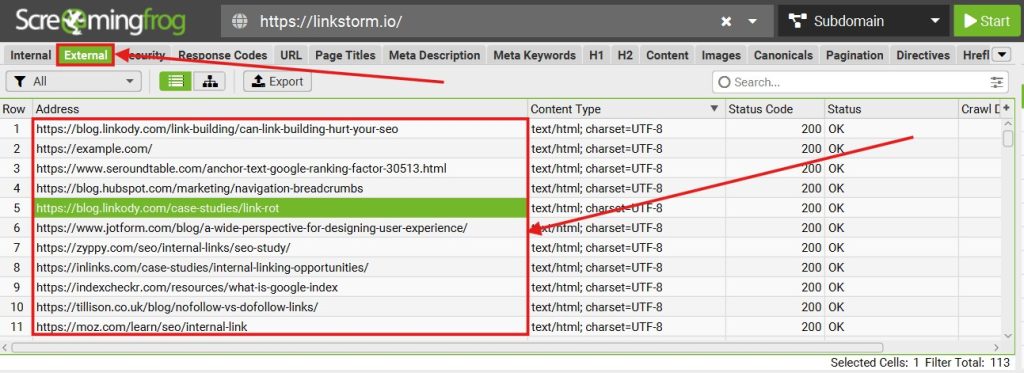
Click on either of the listed URLs and then select Inlinks from the options at the very bottom of the dashboard. This will show all internal pages pointing to the selected external page.
For instance, let’s consider Linkody’s case study about link decay (highlighted in green). There are four pages from LinkStorm’s website pointing to that resource, as shown below:
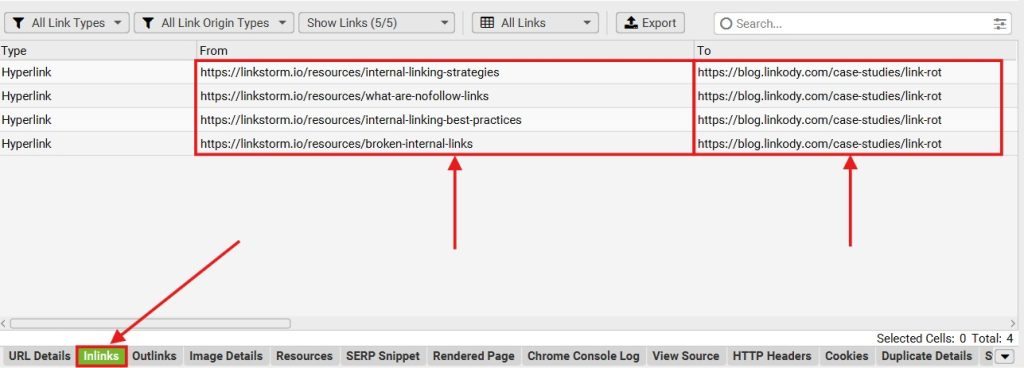
Repeat the same process on other external links to see which internal pages are pointing to them.
While Screaming Frog is generally free, it limits the crawling process to 500 pages. If your website exceeds that limit, you must buy a license at $259/year to use the tool.
3. Use SEO Tools like Ahrefs or Semrush
Arguably, two SEO tools have become indispensable for SEO professionals and marketers—Ahrefs and Semrush. In addition to streamlining site audits and enhancing optimization strategies, these tools are useful for tracking outgoing links from your website.
For Ahrefs, log into your account and write the website URL on the search bar. Define whether you only want to focus on the Exact URL, Path, Domain, or Subdomains.
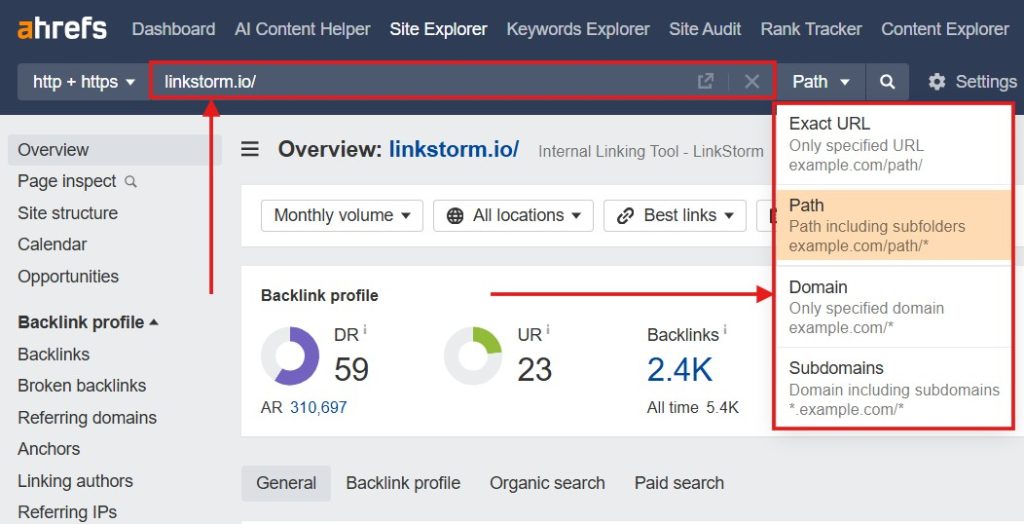
Scroll down the sidebar menu and locate the Outgoing Links option, then click. This will show all of the outgoing links from the specified URL.
For instance, here is an example from Ahrefs themselves:
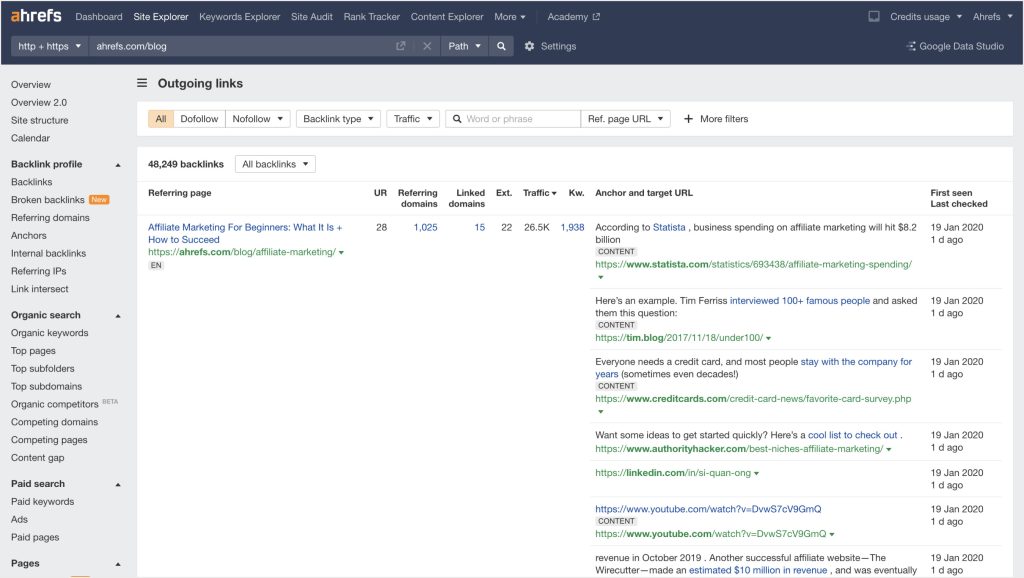
Ahrefs shows the referring page on the left side, essential sitewide data on the middle, and the anchor text plus target URL on the right.
The process is fairly similar to using Semrush. On the Backlinks Analytics dashboard, enter the URL of the targeted website, then click the Outbound Domains tab from the options, as shown in the sample below from Semrush:
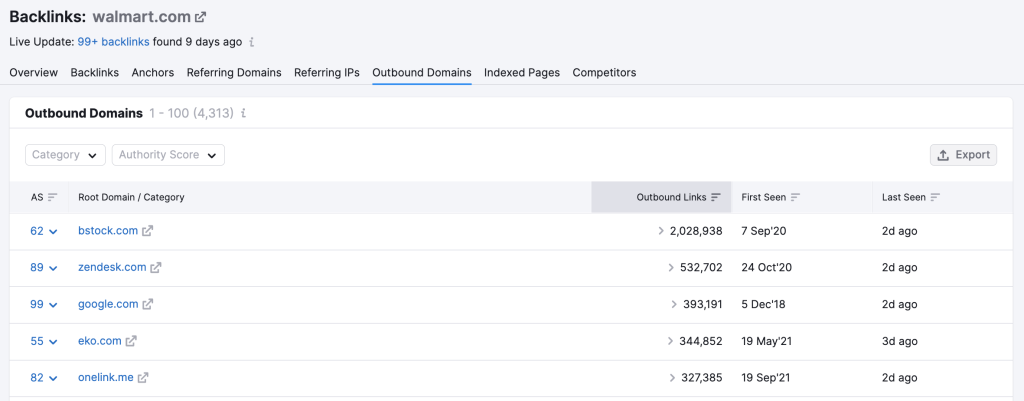
The Root Domain shows your website’s externally linked domains. Under the Outbound Links column, select the drop-down adjacent to the desired root domain to see the specific outbound links and your internal pages linking to them, just like this:
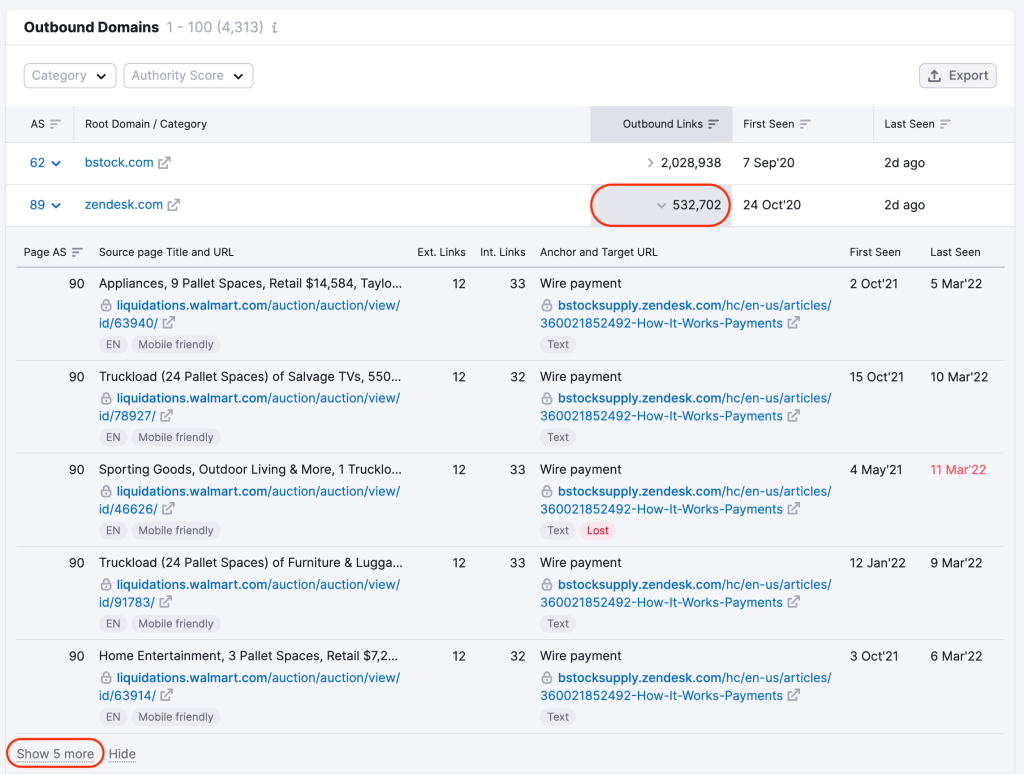
SEO tools make the process of identifying outbound links more intuitive. Perhaps the only pitfall is the investment one must spend to access such tools.
4. Use Free Online External Link Checkers
Another solution to find outgoing links from your site is by taking advantage of free online outbound link checkers. While results are typically not as detailed as others on the list, the free tool will tell you the essentials you must know.
For example, SEOGraphy identifies the external links only from the exact URL you analyze. It doesn’t include subdomains and paths, unlike paid tools like Ahrefs and Semrush.
To use this tool (and others like it), enter the desired website URL on the search bar, then click “Check Page External Links.”
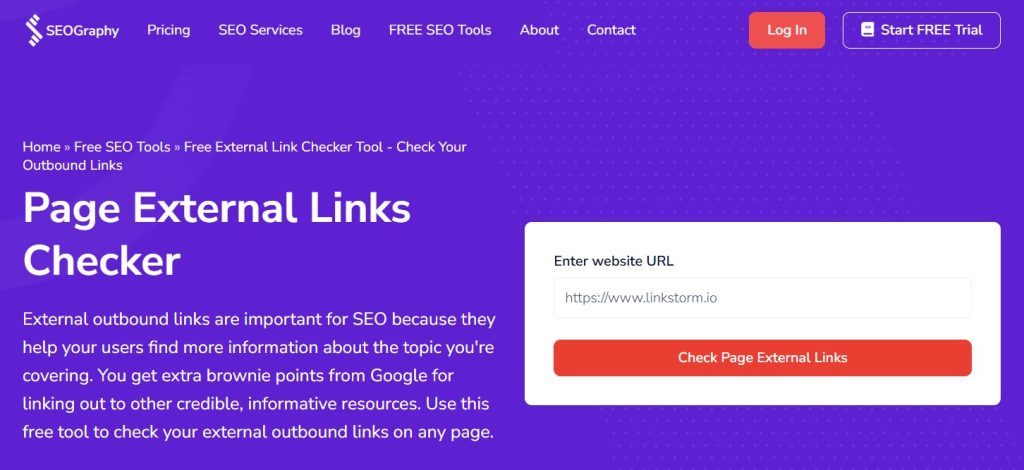
The results are pretty basic. Since the searched URL is considered the source page, the tool only shows the destination pages, not the anchor text used.
The only additional insight you get is the target attribute or whether the link opens in a new or the same tab, as seen below:
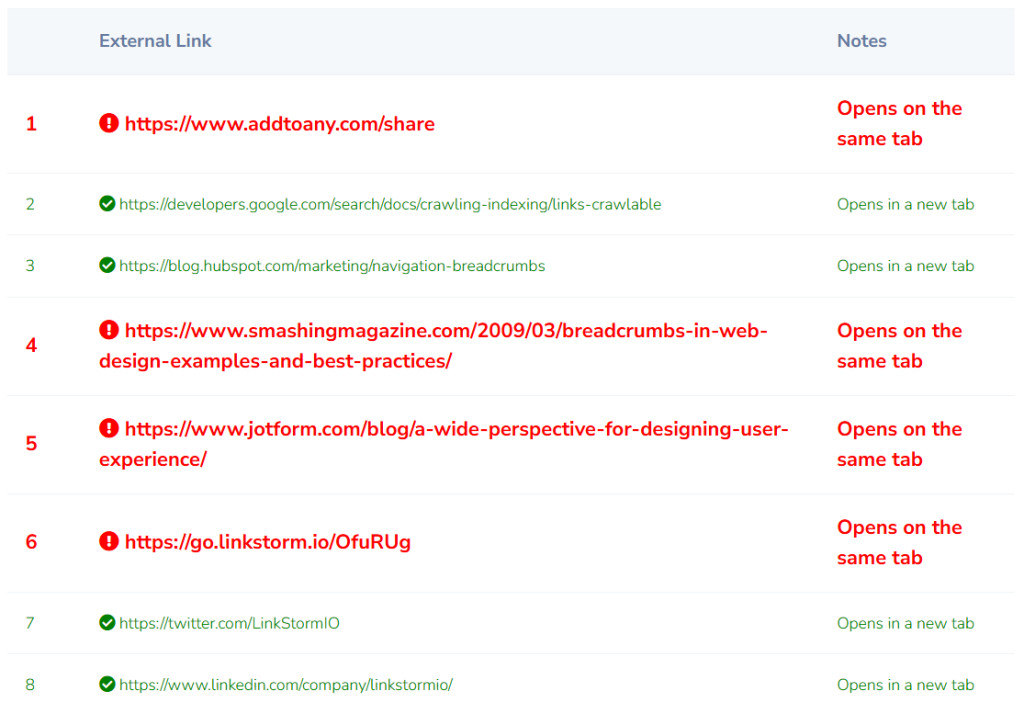
Free online external link-checking tools feature basic data, which is standard. But it is very doable if you only need to check the links without additional insights.
5. Check External Links Manually
Analyzing your outbound links manually is arguably the most no-nonsense process, but is also the most time-consuming. Simply visit every page on your site, skim the content, and see if the hyperlinks lead to external pages.
While straightforward, this process is only advisable if you have a relatively small website with only a few pages. Otherwise, you’ll spend several days, if not weeks, manually going through each page.
LinkStorm Does More than Track Outbound Links
The impact of outbound links tends to get buried in hindsight in the grand scheme of SEO activities.
However, overlooking to monitor the external pages you link to can profoundly impact user experience, how Google views your website, and your SERP ranking.
t’s equally essential to monitor both external and internal links.
If you’re looking for an all-around SEO tool to support your internal and external linking campaigns, you can’t go wrong with LinkStorm.
In addition to tracking outbound links, LinkStorm offers a plethora of uses to support your website’s SEO campaign.
The tool can identify sitewide issues that can bottleneck your SEO performance and ruin the user experience, such as broken links, problematic redirects, and nofollow links.
Instead of performing a manual site audit, simply visit LinkStorm’s Issues tab via the sidebar menu to discover them instantly:
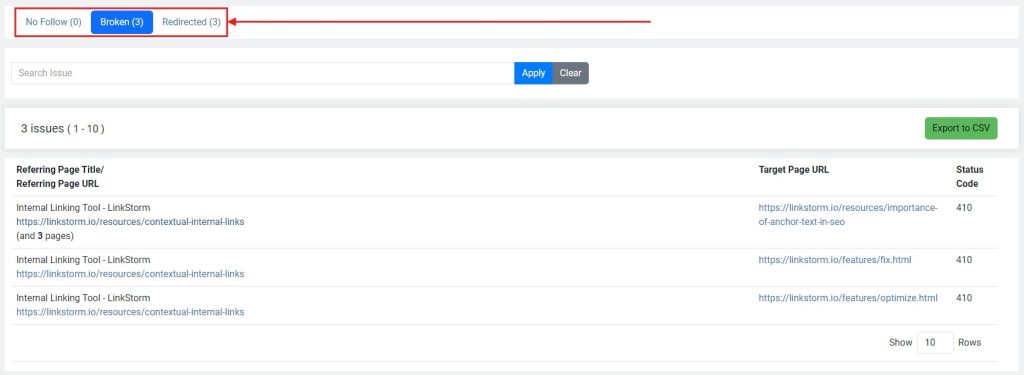
Moreover, LinkStorm uses AI and semantic analysis to suggest highly contextual internal linking opportunities within your website. That means saving valuable time from manually finding and building internal links between your content.
Hover to the Opportunities tab from the main dashboard to find all the internal link suggestions. Click the Accept button to have the internal link embedded in the content in real-time:
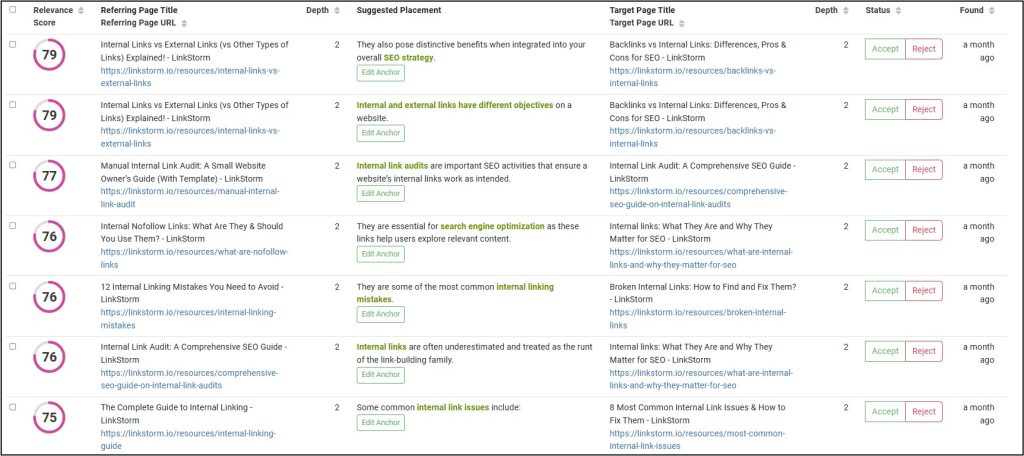
The anchor text can be edited according to your preference. You may toggle the column settings to include additional insights, such as GSC metrics and click depth. This aims to help you make data-driven internal linking decisions.
Interested in how LinkStorm can help you manage your website’s external and internal links?
Try LinkStorm now for FREE—no credit card needed, no strings attached.
Happy linking!
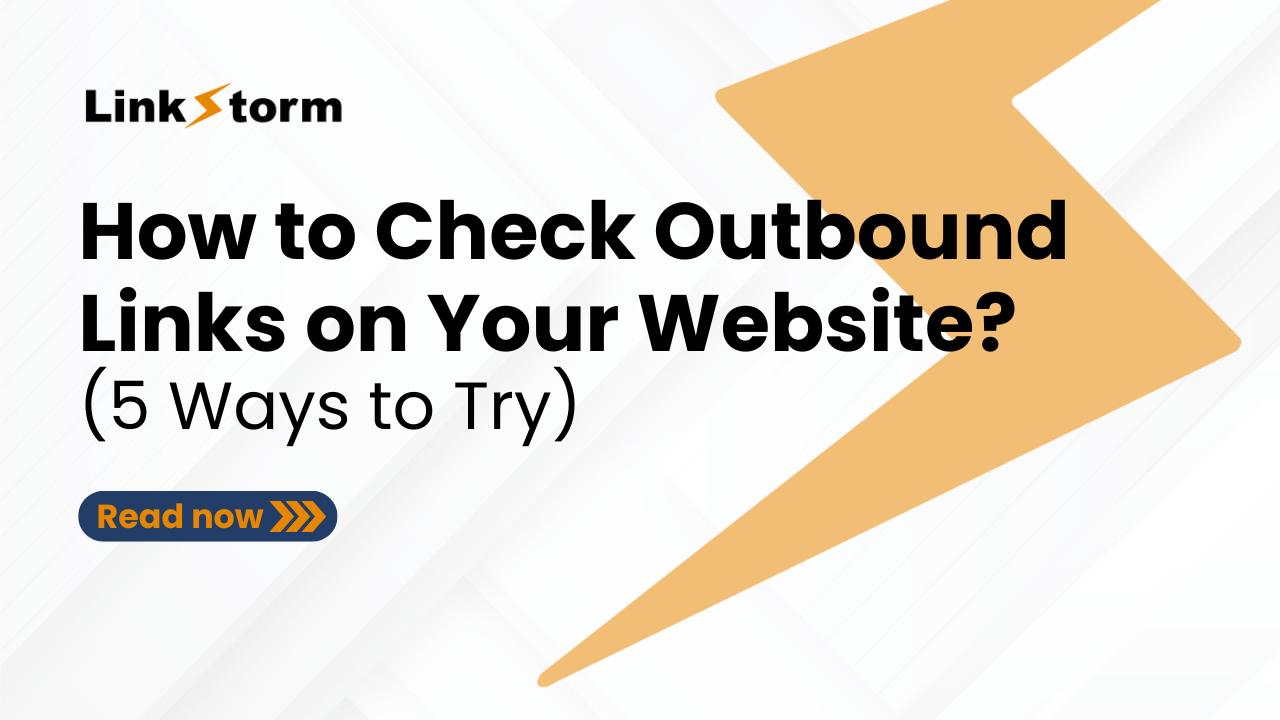
Leave a Reply